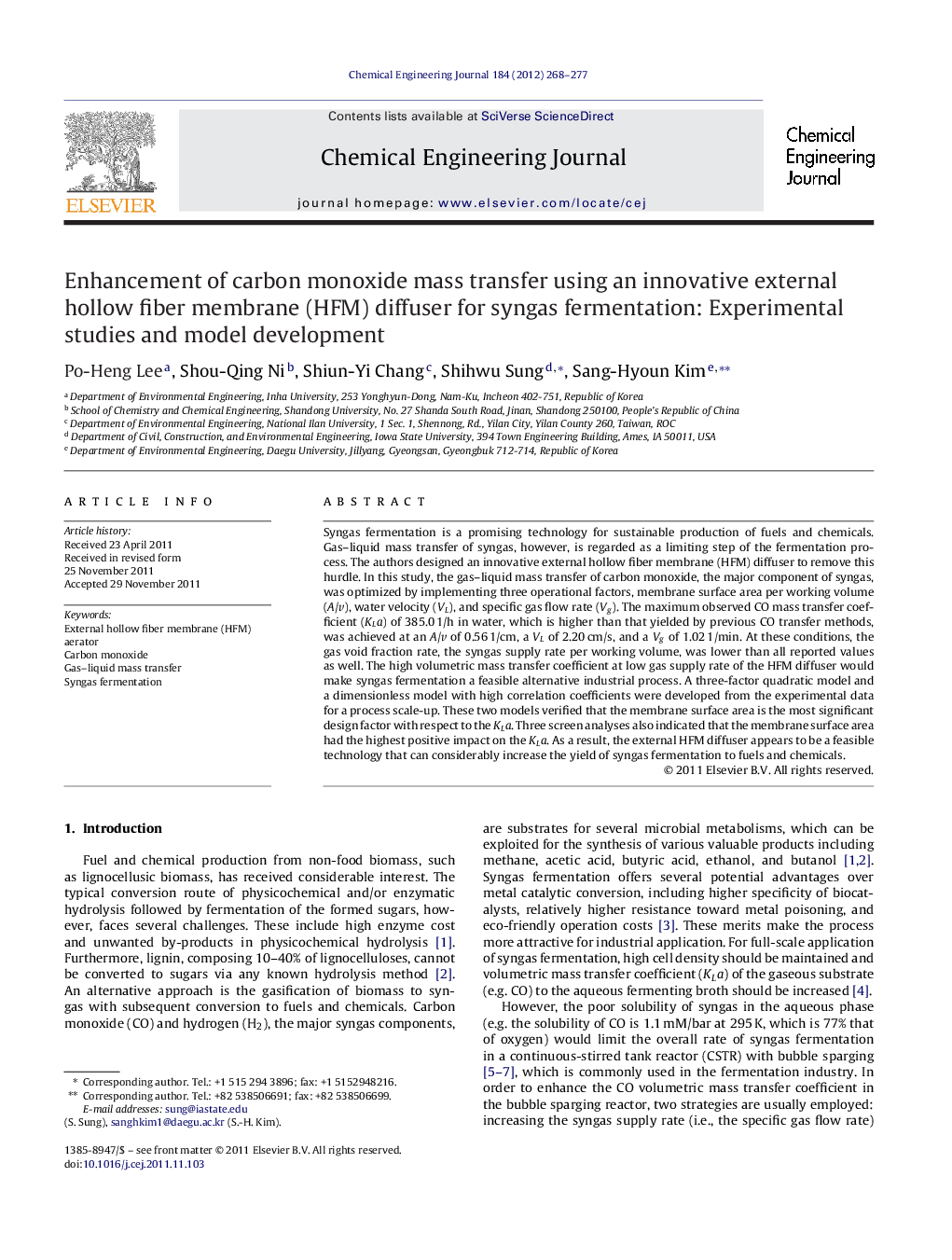| Article ID | Journal | Published Year | Pages | File Type |
|---|---|---|---|---|
| 150116 | Chemical Engineering Journal | 2012 | 10 Pages |
Syngas fermentation is a promising technology for sustainable production of fuels and chemicals. Gas–liquid mass transfer of syngas, however, is regarded as a limiting step of the fermentation process. The authors designed an innovative external hollow fiber membrane (HFM) diffuser to remove this hurdle. In this study, the gas–liquid mass transfer of carbon monoxide, the major component of syngas, was optimized by implementing three operational factors, membrane surface area per working volume (A/v), water velocity (VL), and specific gas flow rate (Vg). The maximum observed CO mass transfer coefficient (KLa) of 385.0 1/h in water, which is higher than that yielded by previous CO transfer methods, was achieved at an A/v of 0.56 1/cm, a VL of 2.20 cm/s, and a Vg of 1.02 1/min. At these conditions, the gas void fraction rate, the syngas supply rate per working volume, was lower than all reported values as well. The high volumetric mass transfer coefficient at low gas supply rate of the HFM diffuser would make syngas fermentation a feasible alternative industrial process. A three-factor quadratic model and a dimensionless model with high correlation coefficients were developed from the experimental data for a process scale-up. These two models verified that the membrane surface area is the most significant design factor with respect to the KLa. Three screen analyses also indicated that the membrane surface area had the highest positive impact on the KLa. As a result, the external HFM diffuser appears to be a feasible technology that can considerably increase the yield of syngas fermentation to fuels and chemicals.
► CO mass transfer (KLa) of hollow fiber membrane (HFM) diffuser is estimated. ► The CO mass transfer coefficient (KLa) of the HFM diffuser was higher than that yielded by previous CO transfer methods. ► The models confirm that the membrane area has the most positive impact on CO KLa.
